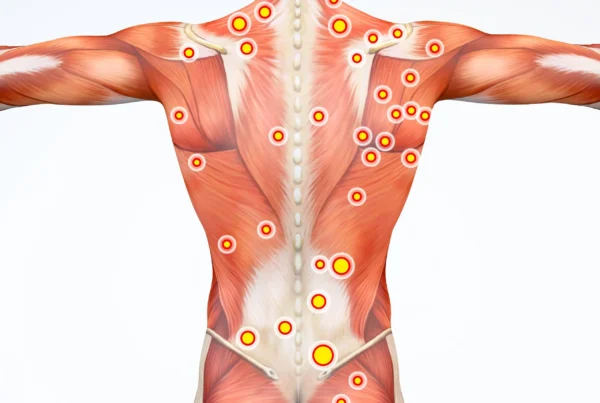A question that we get asked quite a lot as Chiropractors is “is Chiropractic safe?”
There is some concern from a lot of people about the safety of Chiropractic, mostly because of stories they have heard from friends and family. While the answer to that question is generally yes, it is more complex than it initially seems. To properly understand whether “Chiropractic” is safe, we will need to break it down a little further.
First of all, what is meant by Chiropractic? Different chiropractors practice in different ways. They use different techniques, different equipment and overall can have different views and philosophies on how things work. But one thing that most chiropractors have in common is that they perform manual adjustments, or manipulations, primarily to the spine. As adjustments are generally what people think of when they question Chiropractic’s safety, we will focus on them in this blog post.
So, first of all, what exactly is an adjustment? 
When a joint is restricted or “stuck”, it can affect overall movement and different aspects of nervous system function. An adjustment aims to restore proper movement and function to the joint. Adjustment techniques vary joint to joint and patient to patient, but generally, they involve a quick, non-painful thrust to the joint while it is at tension. A ‘cracking’ or ‘popping’ sound is usually heard when the joint moves during an adjustment. This is due to a gas bubble forming in the joint due to negative pressure.
Ok so, are adjustments dangerous? They can be, when applied at the wrong time, with the wrong technique and by the wrong people. However, chiropractors undergo 5 years of university training, including a masters degree, to be trained as primary health care practitioners, specialising in musculoskeletal complaints. Basically, chiropractors are experts in diagnosing and treating most problems with your muscles, joints, ligaments and tendons. Chiropractors are extensively trained in knowing when it is safe to adjust and how to adjust precisely and safely.
So what are common things that people are worried about? Here are some adverse health effects that people commonly (and falsely) associate with chiropractic.
Strokes / Artery Dissections
The most common adverse event that people mistakenly associate with chiropractic treatment, or more specifically cervical (neck) adjustments, are strokes and artery dissections. However, a lot of studies and research has been conducted to show that there is no elevated risk of either of these with neck adjustments. A study done by Cassidy et al in 2008 investigating the risk of vertebrobasilar stroke and chiropractic said that “The increased risks of VBA stroke associated with chiropractic and PCP (primary care practitioner) visits is likely due to patients with headache and neck pain from VBA dissection seeking care before their stroke. We found no evidence of excess risk of VBA stroke associated with chiropractic care compared to primary care.” Essentially, people who are about to have a stroke often experience neck pain and headaches, which are things people commonly go see chiropractors for. So these people are about to have a stroke, and happen to see a chiropractor around the same time of it. The same goes for GPs as well.
Pinched nerves or slipped discs
A Chiropractic adjustment cannot “pinch” a nerve or “slip a disc”. However, if a patient already has a “pinched” nerve or “slipped” disc (or more correctly a disc bulge/protrusion), an adjustment to that specific area can exacerbate the problem. Chiropractors are training in recognising these issues and the risk, and have a large tool bag of other techniques and treatments to help heal the problem and surrounding area with lower, if any, risk.
Adjustments causing pain
Often when a restricted joint needs to be released, or needs an adjustment, it will be tender to touch or move and have some local inflammation. Therefore, when an adjustment is performed, the initial set up may be slightly tender. However, the adjustment is a very quick manoeuvre and is rarely painful. Additionally, most of the time, the area will actually feel better after the adjustment. Some temporary soreness may be felt the next day after a person’s first treatment. This can be due to soft tissue treatment done in the area that can feel a bit tender the next day. However, it is rare to find soreness in a joint post an adjustment.
So in conclusion, there are risks associated with chiropractic adjustments, as there are with almost all health interventions. However, chiropractors are extensively trained to recognise and minimise risk with regard to treatment. Additionally, some of the adverse health effects associated with adjustments have been shown to not have any causal link. There are always risks involved with any health intervention, but compared to many other commonly used interventions, chiropractic has been shown to be extremely safe, when done by a trained health professional. Our Chiropractor also has many different treatment techniques other than manual adjustments, including mobilisation, soft tissue treatment, dry needling, rehabilitation and exercise therapy. We are able to treat a wide variety of musculoskeletal issues with our many different techniques and approaches. If you want to read more on how we do things, check out our Chiropractic page or read more about our Chiropractor Jeremy.
If you have any questions, or want more information, feel free to contact one our Caulfield Chiopractor at Centre 4 Health here.
Centre 4 Health – All your health needs in one place
Is Chiropractic Safe?
Centre 4 Health
Chiropractor Caulfield
368B Hawthorn Road
Caulfield South
VIC 3162




